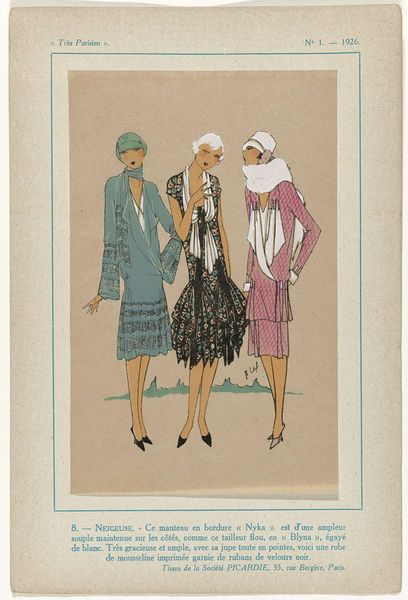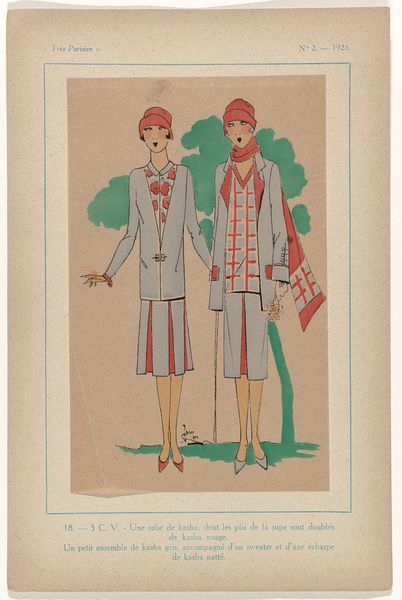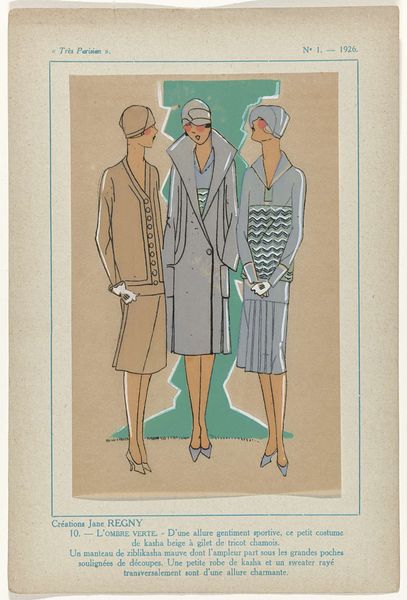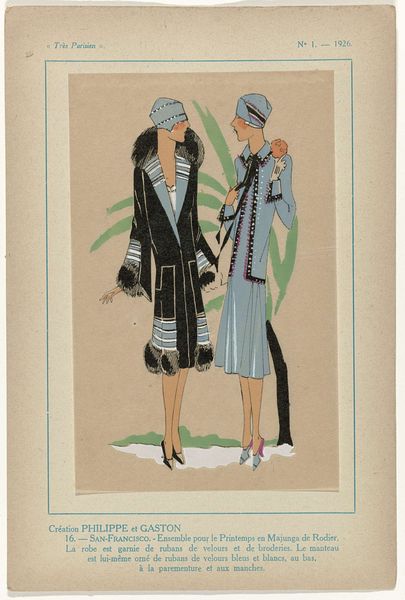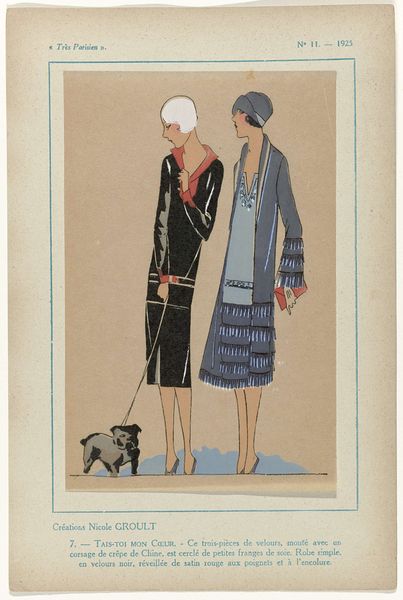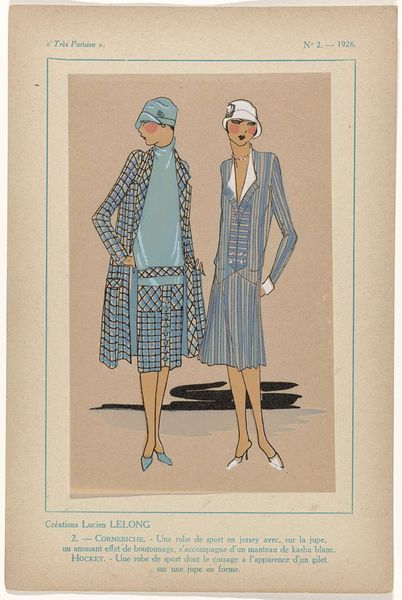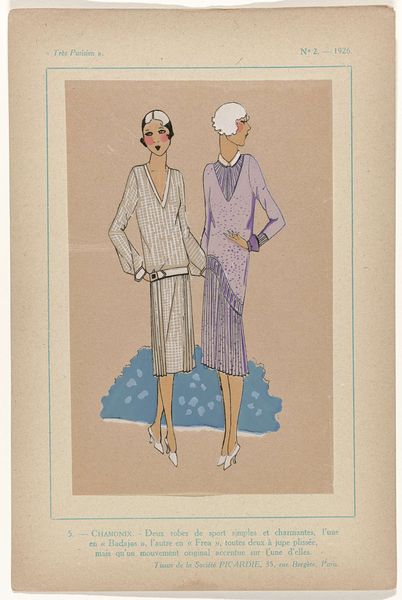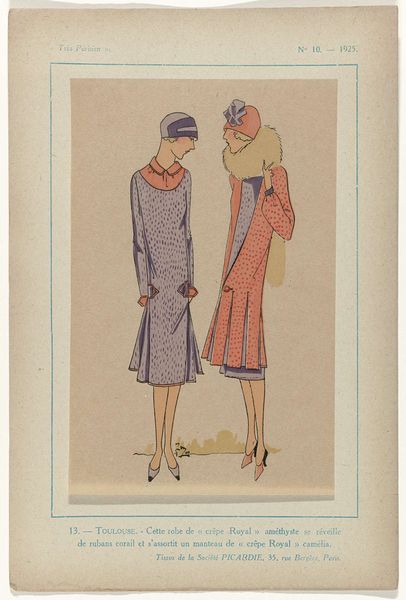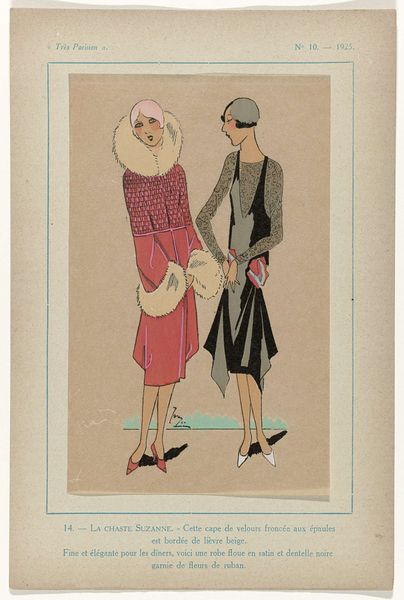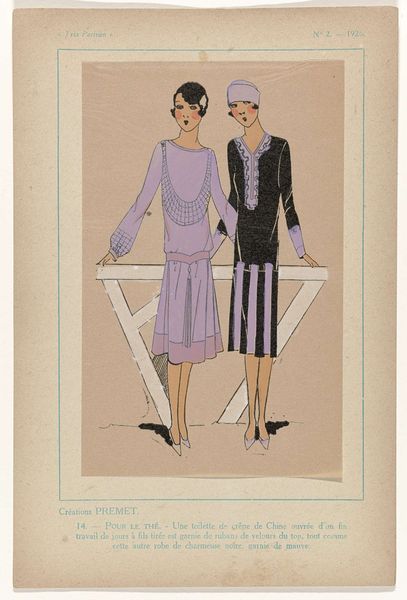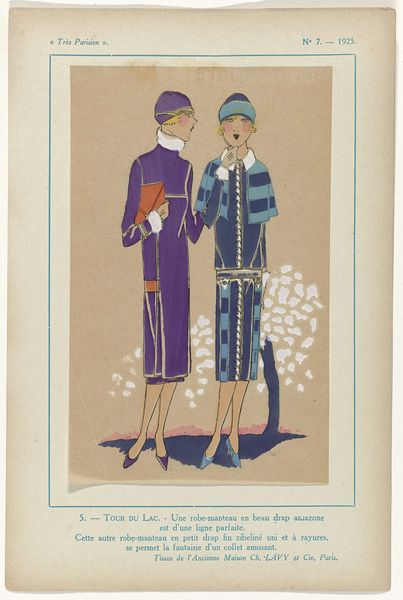
drawing, watercolor
#
art-deco
#
drawing
#
watercolor
#
flat colour
#
watercolour illustration
Dimensions: height 195 mm, width 120 mm, mm
Copyright: Rijks Museum: Open Domain
Curator: I'm struck by the deliberate flatness and sharp outlines; there’s something very modern about it. Editor: That's interesting. Well, let’s take a closer look at "Très Parisien, 1925, No. 10, Pl. 11. - TROIS AMIES" by G-P. Joumard, housed here at the Rijksmuseum. Created in 1925, this piece uses watercolor and drawing techniques to depict a trio of women. What grabs me first is the textile aspect—the texture created by watercolor, suggesting different fabric types such as the fur trims or a heavy wool. It also reminds us of how printmaking and distribution of fashion were central in circulating and forming consumer desires. Curator: Absolutely. Notice how Joumard emphasizes the craft through watercolor illustration, creating these flat fields of colour? He directs our gaze to the texture of those fabrics rather than on lifelike modeling of form. It seems as much about celebrating materials and modes of fashion as about portraying actual women. Editor: True, this plate served as a model—as much an instrument for commerce as it was “art.” Its display setting now frames a crucial aspect of its initial function: dissemination. Publications such as this not only showed styles, but reinforced aspirational trends for its consumers and how they could acquire fashionable clothes. Curator: Consider too the specificities in garment manufacture these plates implicitly underscore. Each different texture indicates specific types of materials sourcing, craft practices for tailoring. Think about the labor embedded in the fur trim alone or intricate zigzag on one of the models: all those details point back directly into economic and labour circuits powering Parisian chic. Editor: I see that. By placing this artwork within our museum, we shift the frame again. We’re inviting our public to see both this art as well as its cultural historical framework – Parisian identity expressed through these objects and designs. Curator: Precisely. Joumard offers an interesting insight into both high style aspirations *and* the grounded realities producing such imagery. Editor: So true. Looking closer has revealed this piece to be not just a pretty picture but a complex reflection of its moment. Curator: I think we can appreciate the craftsmanship embedded not just within this picture but within broader socio economic patterns shaping its manufacture and its future public impact!
Comments
No comments
Be the first to comment and join the conversation on the ultimate creative platform.
